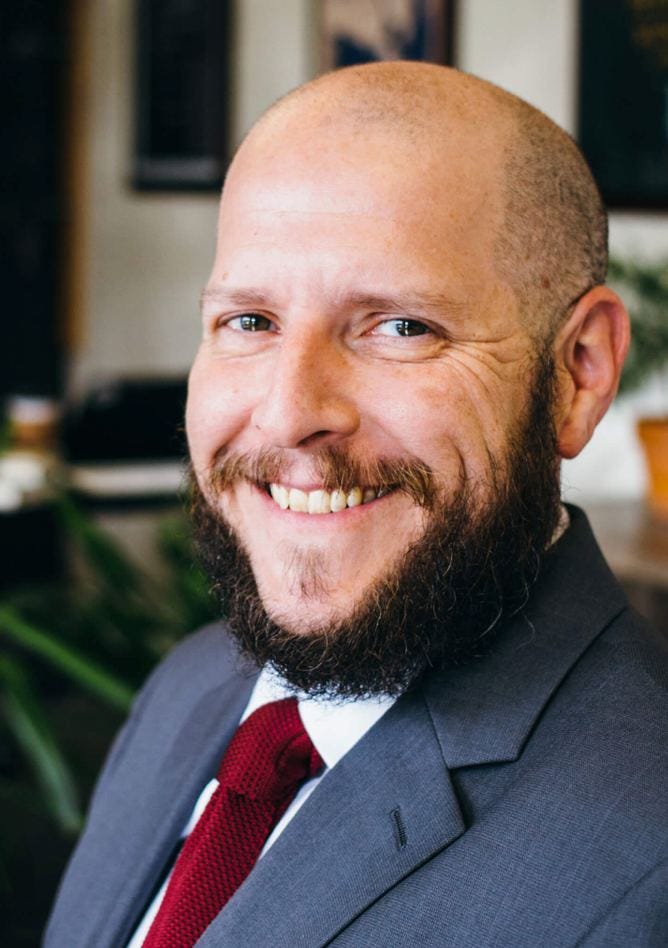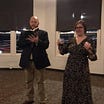This Table is Set for Classical Education
The Supra is just what classical education needs: a table to bring ideas to life, together.
About the guest author: Matthew G. Bianco is the COO of the CiRCE Institute, a leader in the classical education renaissance, and a renowned Tamada at many Supra tables.
I’ve lived and worked in the world of classical education for a long time now, starting in 2008. I’ve lived and feasted in the world of the Supra for a relatively short period of time, attending my first Supra in mid-November, 2023. I love both worlds dearly, and nothing brings me greater joy than to see them coming together.
Classical education is beautiful precisely because it recognizes and honors the nature of the human person; it heals, improves, and perfects that nature toward what it ought to be. The organization I work for, the CiRCE Institute, defines education as “the cultivation of wisdom and virtue by nourishing the soul on truth, goodness, and beauty by means of the seven liberal arts and the four sciences, so that, in Christ, the student is enabled to be better known, glorify and enjoy God.”
Similarly, the Supra is beautiful precisely because it is a human experience that acknowledges reality and orders that experience, so that each human person can learn how to harmonize himself within reality.
Since becoming acquainted with both worlds, I’ve already seen them engage with one another and be drawn to one another from both sides. At every Supra that I have attended that has had classical educators present, I’ve seen those classical educators immediately fall in love with it. And I’ve also encountered people who had never heard of classical education until they discovered it at a Supra, and they immediately start recommending it to their friends and families or getting involved themselves with organizations and training in classical education.
What I am really trying to say is that classical education needs the Supra, and the Supra will love the classical educators who feast at its table.
Imagine a table that embraces, and thereby shows you how to embrace, the “class clown.” Imagine a table that teaches you how to approach every topic, every idea, every person (even your enemies!) with gratitude. Imagine a table that helps you, in communion with everyone else at that table, to celebrate beauty and to grieve suffering. Imagine a table that can reveal how hierarchy, structure, and form can bring freedom to the feast, the relationships, and the conversations.
Now, imagine taking what you’ve learned from that table and seeing those things unfold in your classical classroom. Classical education needs the Supra.
At one Supra, I served as the Tamada for the faculty of a classical school in Texas. We were toasting “footprints,” which was a word the faculty had been using to describe the unseen influence they’ve had on families and students over the years, as well as the unstated influence students have had on them over the years. Teacher after teacher, including some who, I thought, would never get up and give a toast, found themselves eloquently describing these “footprints,” which would normally go unspoken.
The Supra created a beautiful moment for all those teachers, getting to see and hear and celebrate the “footprints” they’d left on students but in many cases never knew.
I’ve also seen teachers take the ideas of the Supra and apply them to the classroom. The Supra often has a “merekipe,” — a role I’ve come to consider a type of “class clown.” The merekipe’s job is to keep the wine flowing at the feast, but also to clown around just enough to keep the table from getting too serious or too orderly. It’s the Supra’s way of inviting “chaos” to the table. The only way to keep chaos from destroying your feast is to give chaos a seat at the table.
Teachers have reported to me that they’ve done the same thing in the classroom and seen amazing results. Identifying the so-called class clown and giving him a title, like “merekipe,” and giving him permission to both help you and keep the atmosphere from becoming too rigid, has made the class clown less disruptive and apply his art appropriately.
The Supra gives us practice with the classical ideas of form and relationship; truth, goodness, and beauty; celebration and grief. The students and teachers who are reading about these things in their classrooms everyday with young people everywhere have so much to bring to the table.
I look forward to every Supra I lead or attend, no matter who is there: friends, family, neighbors, or folks from church. Every time, my personal highlight is to see the spark that shines in the classical educator’s eye, at his first Supra.







Well this I loved!
Dear Matt, if and when you have time, could you outline more ways in which the "supra structure" could be adapted and worked into our "one-room village school"?
so nice to see your face and words here!
toast!
-mb
I live in Georgia, so if you visit, I'll be glad to share a supra with you